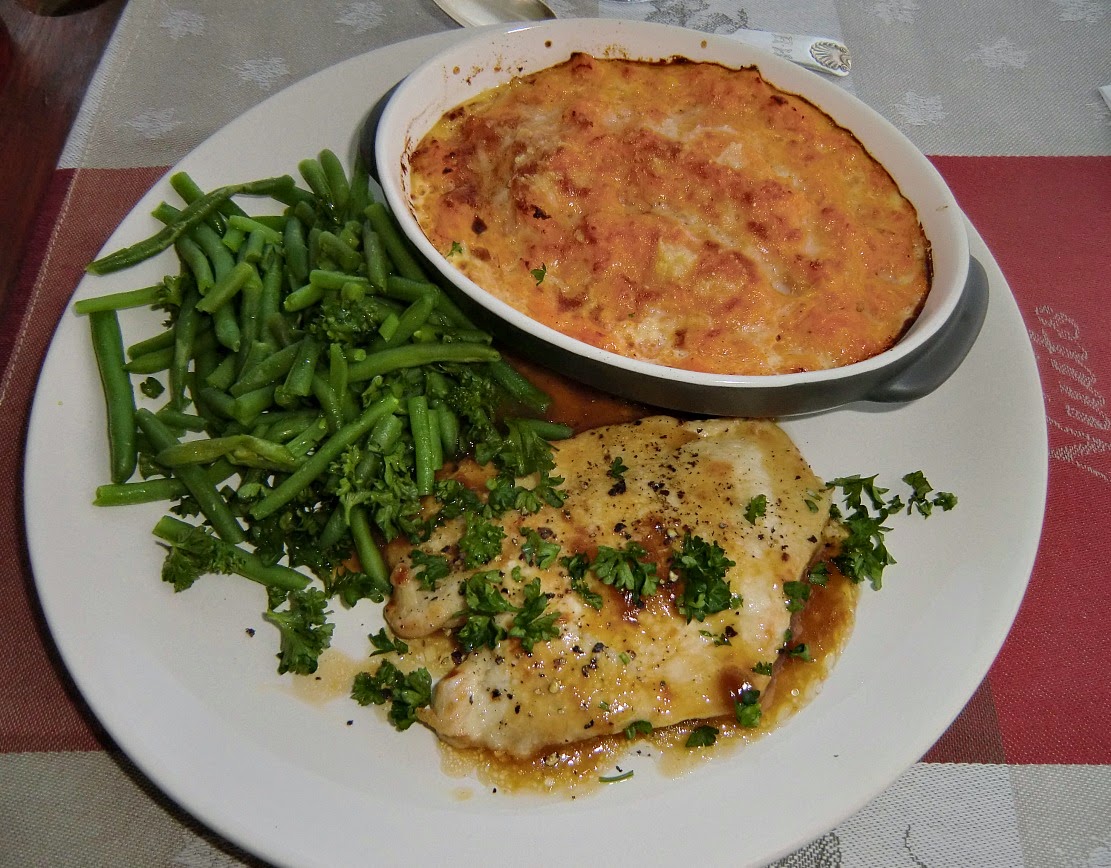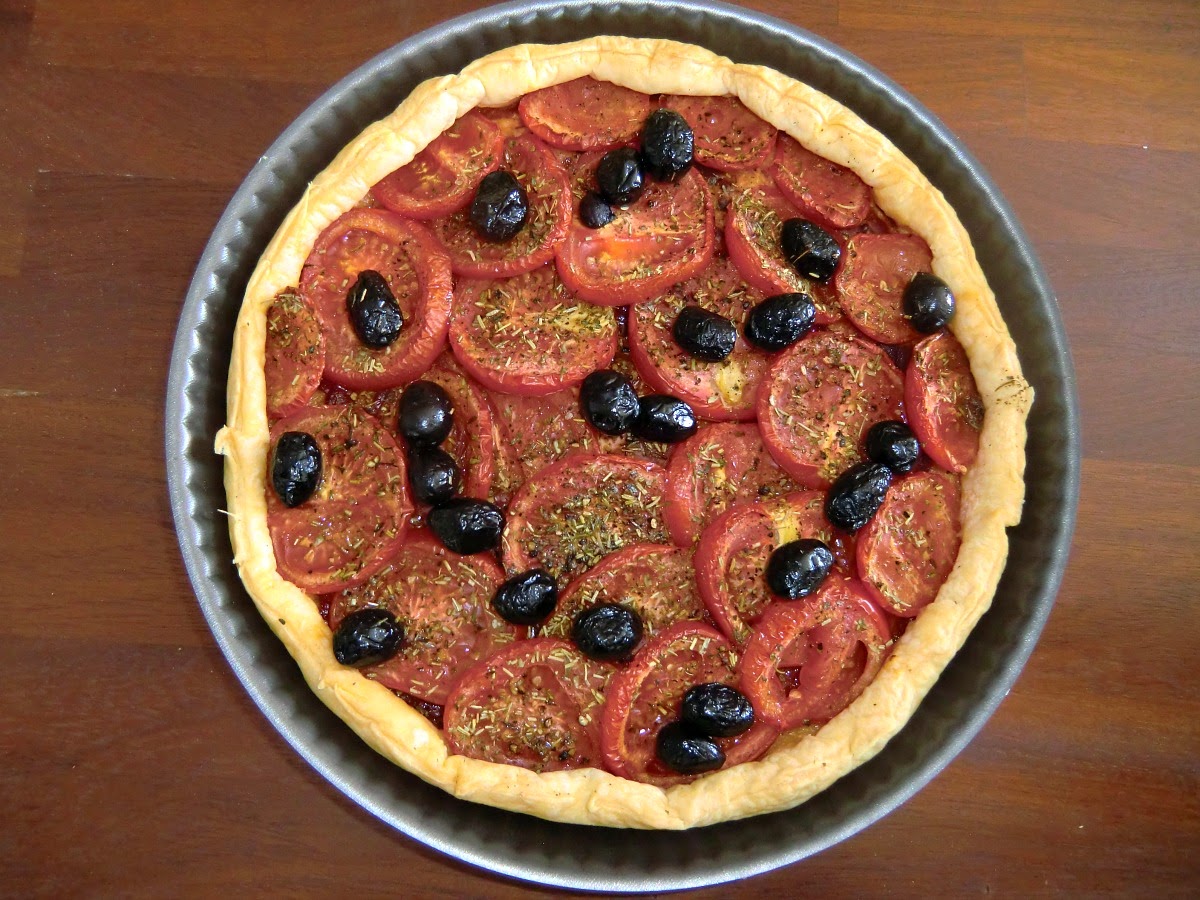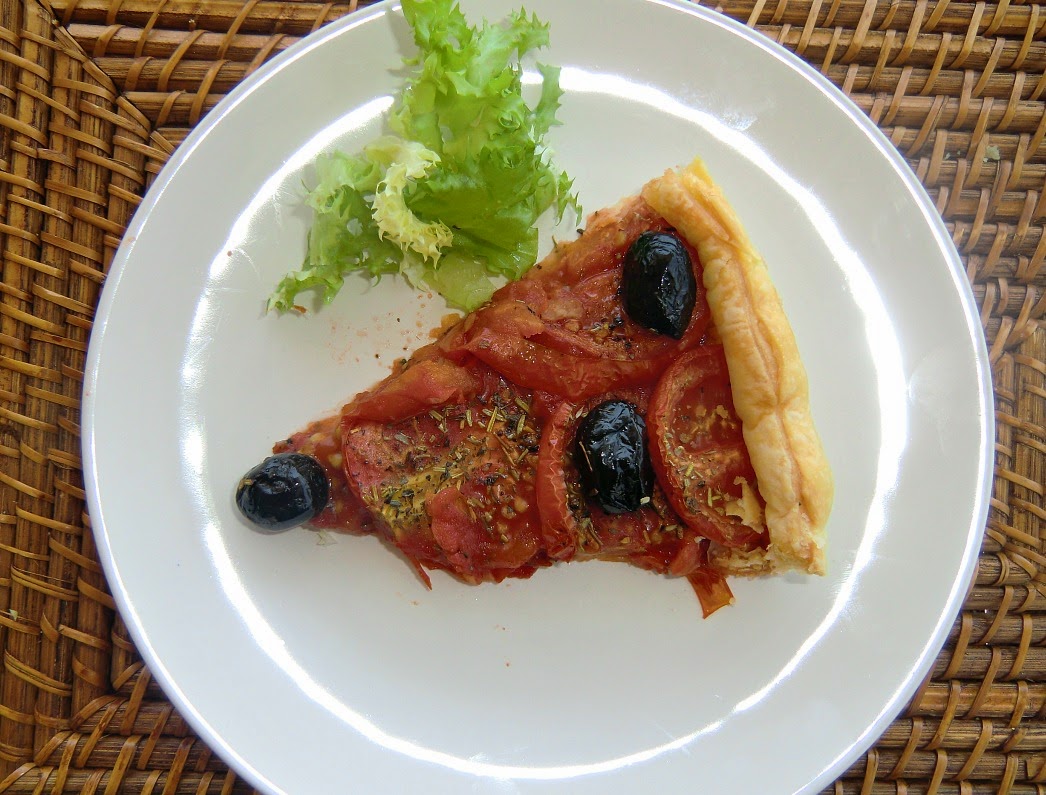Turkey escalope with winter squash gratin
Winter squash comprises several squash species. It is harvested in the mature state, when the seeds have matured fully and the skin has hardened.
Deep orange- coloured courge wedges have now appeared in our supermarket in Nice. According to Wikipedia, courge could be translated as butternut squash. It is a nutritional super food; very little calories, but lots of antioxidants as its deep orange colour suggests. It can be used in soups, vegetable bakes or in gratins.
2 servings
2 nice turkey escalopes, about 150 g each
About 200 ml good chicken stock
2 tbsp rapeseed oil
Freshly ground black pepper
About 200 g frozen green beans
Fresh parsley or chives to decorate
For 2 servings winter squash gratin:
2 ramekins oiled with rapeseed oil
A wedge of winter squash
1 egg
1 tbsp rapeseed oil
A handful of freshly grated parmesan
Freshly ground black pepper
A pinch of freshly grated nutmeg (optional)
Peel the winter squash, and cut into pieces. Cook for 10 minutes in boiling water, and then dry in a colander. Transfer into a bowl and coarsely crush with a fork. Grate the parmesan. Add the egg, rapeseed oil, half of parmesan and black pepper, and mix well. Divide the winter squash mixture into the oiled ramekins. Sprinkle with the rest of parmesan and divide 1 tbsp rapeseed oil over the parmesan.
Preheat the oven to 180⁰ C, roast. Roast the ramekins for 20 minutes, then for 5 minutes more in 210⁰ C until nicely coloured on top.
Meanwhile fry the turkey escalopes on both sides in a frying pan over medium- high heat until golden. Then reduce the heat to medium-low, grind over black pepper and pour over the chicken stock. Cover and let simmer until the gratin is cooked.
Microwave the frozen green beans for about 3 minutes.
When the gratin is cooked, place the ramekins on the plates. Divide the turkey escalopes on the plates and pour over the stock. Divide the green beans on the plates and decorate with fresh herbs.























0 comments:
Note: only a member of this blog may post a comment.